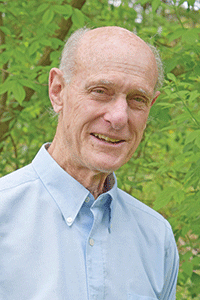The last of a two-part series
“The fair was earthy in the old days. It smelled of manure and cigars,” recalled Perk Steffen at the age of 86, in 1982, when talking to writer Ken Pritchard about the Houston County Fair.
It may have began as a statehood celebration. After the first two identified fairs in 1858 and 1869, the county fair became an annual autumn harvest festival from 1886 through 1900.
“You have to remember that Houston County was strictly dependent on farming at the time,” said Steffen. “The only manufacturing we had was butter production, and most of that was done in the home – in a kitchen, in a churn.”
Steffen added, “The fair was a dress-up affair with menfolk in “their best bib and tucker, your Sunday best.” Women of that era wore long dresses, and for the fair, they added their best hats – “ribbon and feather bedecked, piled up in a colorful manner.”
A fair promotion in the 1887 Caledonia Journal began, “The fair, the fair, the County Fair, in which all should an interest share, is close at hand and will soon be here. Come from the hill-top and the vale, afoot, a horseback and by rail. Bring your grandsire, uncles, niece; your pigs, hens, turkeys and your geese; the burly hired man and your maid; horse, oxen, kine of every grade; the prattling boy, the suckling babe; the handiwork of every trade;… your country cousin, city swells, your blooded racers and your belles; your wives and sweethearts, do not fail…”
Before mechanical rides came to the midway, the carousel or merry-go-round was the first ride “with brightly painted wooden horses. It also played the popular music of the day,” recalled Steffen, such as “In the Good Old Summertime” or “Good Bye Nellie.”
Hazel Olson, at age 91, told Pritchard, “the second ride had to be the ferris wheel, and we stopped on top for a long time.”
Baseball was an early fair attraction, especially when Caledonia and Houston played. “That was a keen rivalry,” said Steffen. “Houston had the (best) ballplayers after the First World War.”
Olson said her dad used to take what they called “the band wagon to the fair. He’d haul up the (Houston) city band and the ball team to Caledonia. The roads weren’t paved….”
According to Olson and Steffen, there were no food stands in the early days. Families brought enough picnic supplies to last all day.
“Sometimes the only time you could count on getting Spring Grove Pop was at the fair,” recalled Steffen. “Kept cold with ice harvested on Gengler’s Ice Pond the winter before.”

He said he “used to kid the fair board. This lady known as Lolita Stephens had an act where she would float on top of the water in a tank. I used to accuse the older fellows that they were so interested in Lolita in the tank, that they forgot to sell tickets.
“The most fascinating thing to a boy was the race track,” said Steffen. “We would get there early in the morning and just hang on the fence.” Steffens compared those horses, the trotters and pacers, with luxury cars of a later era.
“Betting, (horse) racing and liquor. That’s what they said ruined the fair,” said Steffen about some reformers when the county fair was reorganized in 1912. ”The ‘drys’ outnumbered those who were ‘wet’, so there was no racetrack on the new grounds.”
The racing and gambling have not returned. Neither has liquor, but a beer concession was introduced in 1935.
The 4-H program, founded in 1920, became part of the county fair in 1924. Parades of 4-H floats, livestock and school bands became a popular annual event until the last one in 1979. The National Championship High School Band from Mabel led the 1937 parade.
In addition to baseball games, other early traditions lost to time included hot air balloons, “free acts” variety shows, car giveaways and grandstand shows with showgirls and comedians.
Steffen recalled weddings at the grandstand with “area businesses donating gifts as incentives to get couples to participate.”
A major change in 1991 was certainly welcome – the FREE Houston County Fair. No admission charge; no more fence jumping!


Leave a Reply